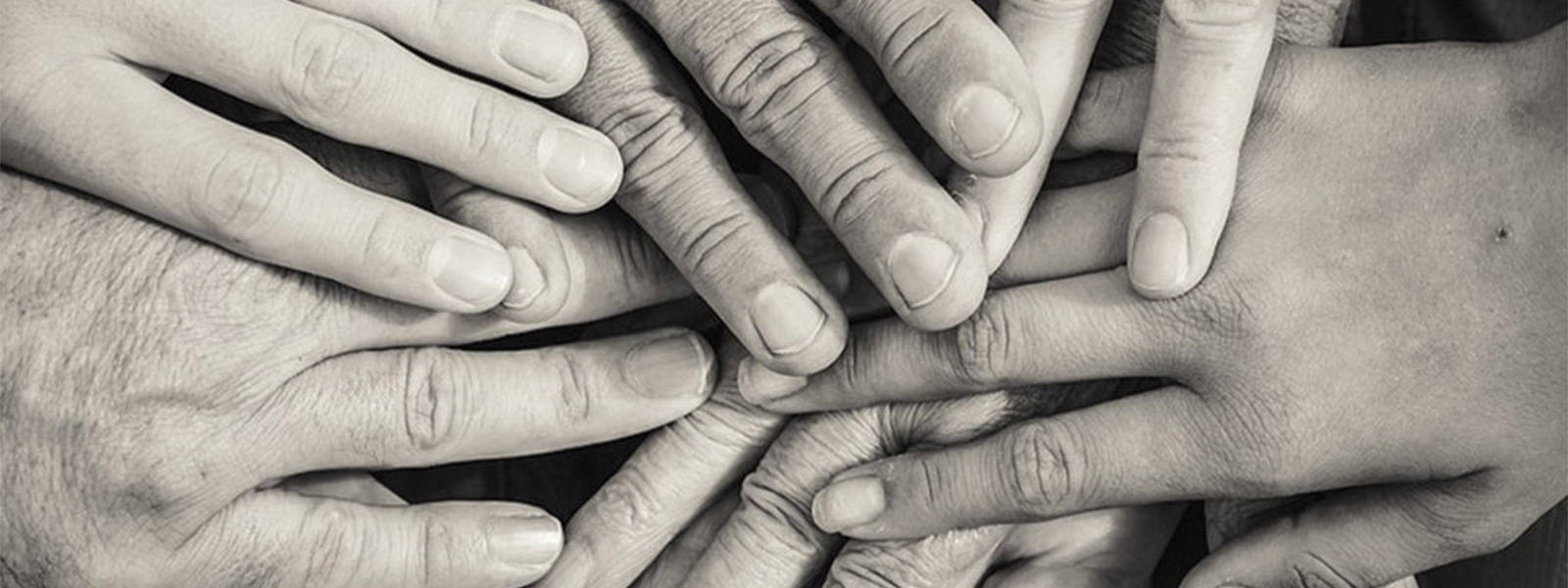
« DANS MA PEAU » : L’EXPOSITION QUI REMET LA PEAU AU CENTRE DE L’ATTENTION
"Précieuse". Voici l’autre nom que l’on pourrait donner à la peau, elle qui nous protège et nous informe au quotidien sur notre environnement. Elle est ce que l’on a de plus personnel, nous différencie des autres, nous représente, porte notre odeur, participe aux interactions avec autrui et dessine notre physique au gré des courbes du corps. Elle est le reflet de notre santé et demande à être étudiée et comprise afin de pouvoir répondre au mieux à ses attentes.
Son importance cruciale et son fonctionnement physiologique complexe ont inspiré l’exposition « Dans ma peau » présentée jusqu’au 3 juin au Musée de l’Homme à Paris. Cette dernière permet notamment de comprendre son fonctionnement, sa perplexité, son rôle ou encore les enjeux pour le futur, le tout à l’aide de travaux et d’études scientifiques aiguisés. Une exposition à voir pour découvrir ou redécouvrir l’organe le plus détendu du corps humain et finalement discerner l’incroyable complexité biologique et architecturale de celle qui nous accompagne au quotidien.

NABILA
Mai 2019
1. LA PEAU, UN ORGANE AUX SENS AIGUISÉS
Pour parler d’elle, on utilise bien évidement le terme d’« organe ». Terme qui a bien tendance à être oublié à son sujet, ne sachant que trop rarement comment la définir. Pourtant, on n’en attend pas moins de cette couche externe qui pèse près de 4 kilos et connecte l’ensemble du corps via ses nombreuses pellicules. On lui connait notamment son épiderme qui n’est autre que la couche externe de la peau et dont l’épaisseur oscille entre 0,05 mm pour la paupière et 1,5 mm pour la plante des pieds. Le derme lui, prend place sous l’épiderme et s’avère être le responsable de la fermeté et de l’élasticité de la peau. L’association au diapason de toutes ces couches permet à cet organe vital de développer tous ses sens. Du toucher à l’ouïe fine, notre peau ressent tout et nous le fait d’ailleurs savoir si elle en ressent le besoin.
2. LE TOUCHER
Qui n’a jamais apprécié la douceur d’une caresse sur le bras ou un bon massage des pieds ? Cela est notamment dû au grand nombre de récepteurs sensitifs présents dans l’épiderme, principalement dans les extrémités, même si les autres parties du corps en sont également dotées mais en moindres quantités. En étant sollicités, ces récepteurs déclenchent la sécrétion de neurotransmetteurs mais également de l’hormone du bonheur, à savoir, les endorphines ou encore des ocytocines, responsables de l’attachement voire de la dopamine, véritable booster d’énergie. En résumé donc, une simple caresse peut détendre et calmer même le plus agité et crispé d’entre nous.
En tout, ce sont près de 600 000 récepteurs sensoriels et 200 000 thermorécepteurs qui se disputent la moindre parcelle de notre peau. Leur présence renseigne le corps sur le monde extérieur et permet à notre système cognitif de réguler la température de notre corps. Ce sont elles également qui nous permettent d’assimiler la forme, la chaleur ou la fermeté d’un objet; les capteurs sensoriels étant chargés d’analyser ces informations afin de les transmettre au cerveau qui sera ensuite en charge de les enregistrer.
3. UN ORGANE TOUT DROIT RELIÉ AU CERVEAU
Qu’il fasse froid, chaud, qu’il vente, qu’il pleuve, la peau reste l’organe le plus exposé et par conséquent celui qui réagit en conséquence. De ce fait, elle peut être amenée à avoir la chair de poule ou à souffrir des suites d’une violente exposition prolongée au soleil. Là encore, ce sont les capteurs sensoriels qui se chargent d’envoyer au cerveau toutes les informations nécessaires au bon fonctionnement vital. C’est par ce biais là qu’il détermine si un objet est lisse, rugueux, mou, dure, ou encore chaud au froid. La perception de la douleur passe aussi par ces capteurs et est transmise au cerveau le long des nerfs. C’est de cette manière qu’il apprend quelle partie du corps est endommagée et cela, en fonction de l’intensité de la douleur.
4. «LA PEAU ÉCOUTE ET PARLE»
En bonne façade extérieure, la peau est soumise, avant le reste du corps, au monde extérieur. Les agressions comme le soleil, le vent, l’eau, la température ou encore les virus ou la pollution sont immédiatement captées et traitées via les thermorécepteurs qui alertent le cerveau. Pour se protéger et maintenir la température interne du corps à 37 degrés, les thermorécepteurs présents dans la peau envoient de ce fait, des messages au cerveau qui réagit en conséquence. C’est ainsi que l’on est amené à suer, se contracter, avoir la chair de poule, bronzer ou avoir un coup de soleil…
En réponse à un coup de froid, par exemple, le corps réagit et se défend en contractant des petits muscles présents sur la peau qui font dresser les poils. On l’appelle la chair de poule. Malheureusement, ce mécanisme musculaire n’est aujourd’hui plus très efficace du fait que, contrairement à nos ancêtres, nos poils ont disparu en grande partie. En revanche, à l’époque cela permettait de conserver la chaleur corporelle en faisant office de couche isolante.
Mais il en est de même avec les rayonnements nocifs du soleil, soit les UVA et UVB dont il est nécessaire de se protéger. Ces premiers pénètrent plus facilement que les UVB et atteignent le derme dans lequel sont logés les protéines de collagène et d’élastine. Une fois altérées par les rayonnements, ces dernières ne peuvent malheureusement plus assurer l’élasticité et provoquent le vieillissement cutané. Face aux UVB, la peau réagit également en stimulant la production de mélanine et aussi de kératinocytes qui va épaissir la couche cornée afin de la rendre moins perméable aux rayonnements.
5. UNE COMPLEXITÉ HORS PAIR
Alors que nous considérions tous avoir affaire à une simple surface uniforme, il n’en est en fait rien. On pense notamment aux différentes couches évoquées plus haut, mais également aux récepteurs, aux poils mais aussi aux vaisseaux sanguins et aux glandes, entre autres, qui à eux tous, font vivre cette couche externe ainsi que l’ensemble du corps. De quoi parler d’une architecture complexe qui s’accentue entre microbiote et microbiome.
6. UNE MULTITUDE DE MICRO-ORGANISMES
Au-delà de ses cellules types, la peau est aussi habitée par de nombreux micro-organismes invisibles qui participent à sa protection au quotidien. On parle alors de microbiote, à ne pas confondre avec le microbiome qui lui définit l’ensemble des gènes présents dans le microbiote. Il s’agit là en réalité d’un ensemble de bactéries, virus, champignon ou encore d’acariens qui vivent en harmonie sur la surface du corps et synthétisent, via leur activité métabolique, tous les produits nécessaires à la bonne santé de cette surface. C’est lorsque l’équilibre entre ces différentes espèces est bouleversé, laissant alors s’installer les bactéries nuisibles, que la peau est malmené. Propre à chacun d’entre nous, ce microbiote nous définit comme pourrait le faire une carte d’identité.
7. LE MICROBIOTE, UNE MICROFLORE NÉCESSAIRE AU BIEN-ÊTRE DE LA PEAU
La présence de cet ensemble de bactéries sur la surface de la peau n’a rien de négatif. Comme nous l’avons évoqué plus haut et comme le présente l’exposition dument citée, cette flore bactérienne communique entre ses différentes espèces via des messages chimiques. Elle est alors tout à fait consciente des dangers et s’efforce chaque jour de lui assurer une stabilité. Pour survivre, ce microbiote se nourrit des protéines et lipides contenus dans la peau et sécrète en retour un film, le fameux « film hydrolipidique » qui la protège des envahisseurs extérieurs.
Ici présents, au milieu de cette flore loin d’être figée, on retrouve toutes sortes d’espèces, d’acariens ou de champignons microscopiques qui colonisent la peau lorsque les conditions sont favorables à leur reproduction. Chaque parcelle de cette dernière contient près d’un milliard de bactéries et cent fois plus de gènes bactériens. Inutile de faire la grimace quant à leur présence puisqu’elle est totalement normale et justifiée. En outre, les acariens par exemple se nourrissent de nos peaux mortes. Les bactéries elles, sécrètent une barrière hydratante qui empêche la peau de se craquer ou de se dessécher. Dans de rares cas cependant, il est possible que la fertilisation de certaines de ces espèces donne lieu à des démangeaisons ou de petites allergies. A la base du sourcil ou des cils, par exemple, est installé un petit acarien nommé demodex folliculorum et dont la prolifération peut parfois causer des infections cutanées.
8. UN ENJEU SCIENTIFIQUE
Comprendre la peau, c’est avant tout pouvoir lui offrir un futur sur-mesure entre soins adaptés et avancées scientifiques. La présence de toute cette flore encore incomprise ou de cette architecture complexe demandent encore à être élucidée afin d’en tirer à l’avenir toutes les réponses nécessaires aux évolutions scientifiques et médicales.
9. UN PREMIER PAS SUR LA RECONSTRUCTION CUTANÉE
Les avancées sont déjà nombreuses, notamment dans le cas des Grands brûlés. A ce stade, il est désormais possible de reconstruire des peaux simplifiées qui ont par ailleurs déjà permis le transfert de greffons adaptés à ces derniers. Des banques de cellules ont été créés dans ce cadre afin de pouvoir répondre aux recherches scientifiques.
Mais pour les chercheurs, il est désormais question d’aller encore plus loin, en utilisant entre autres de nouvelles techniques dont la bio-impression 3D qui pourrait servir à imprimer des fragments de peau nécessaires à la reconstruction cutanée ! Ces mêmes chercheurs parlent également de comprendre le très complexe microbiote afin de pouvoir finalement l’utiliser pour maintenir la peau en forme dans le temps. Tant de mystères encore sans réponses qui ouvrent un champ très large aux enjeux scientifiques de l’avenir.
Exposition « Dans ma peau » au musée de l’Homme. Du 13 mars au 3 juin 2019.
